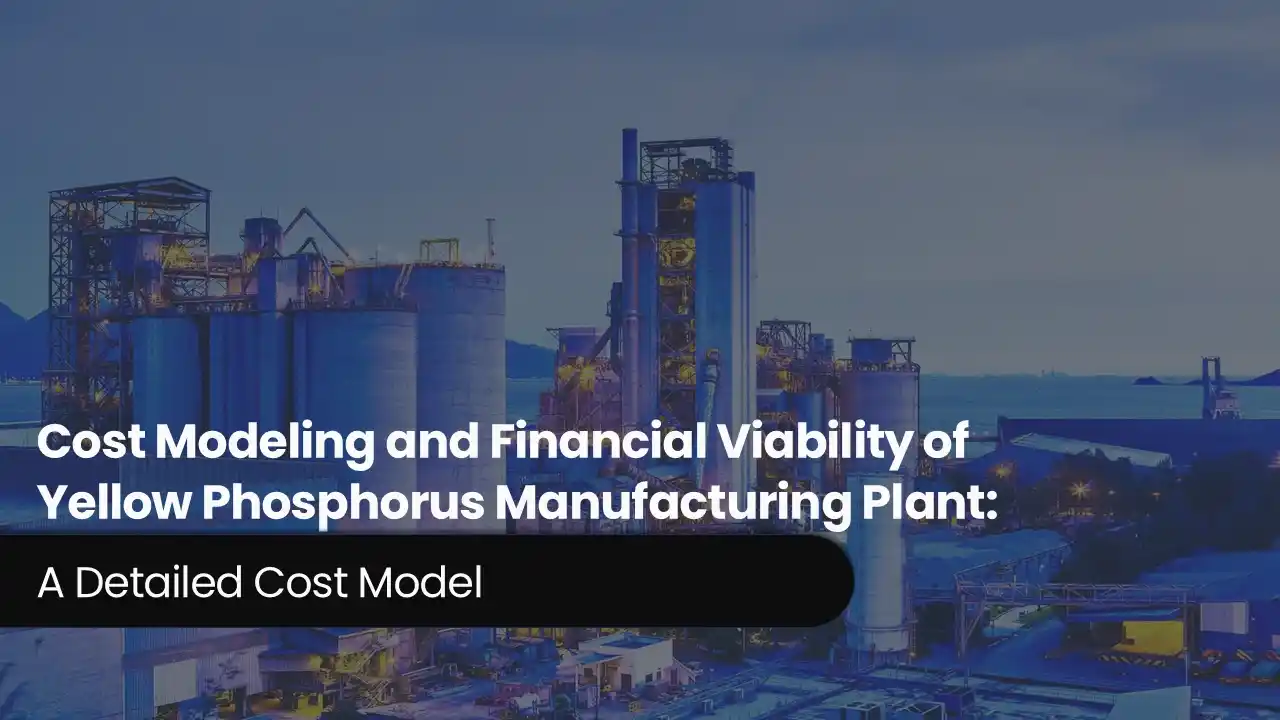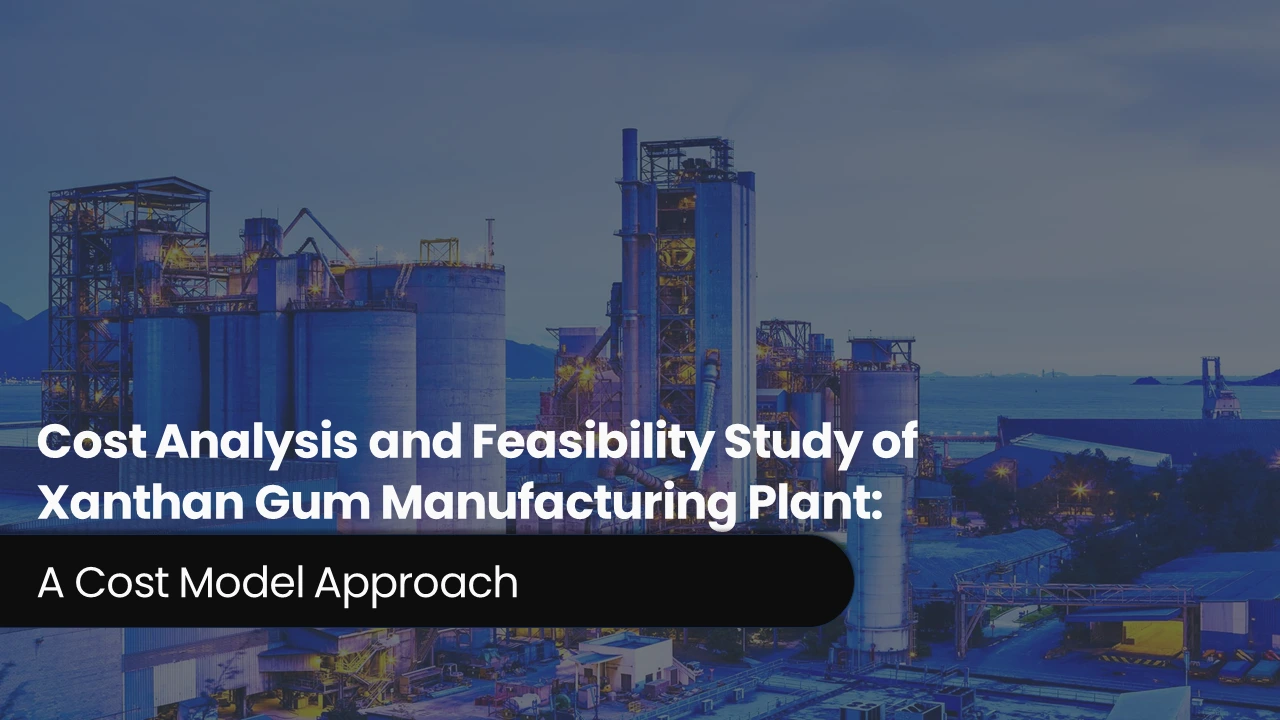Cost-Benefit Analysis of Titanium Dioxide Manufacturing Plant: A Detailed Cost Model
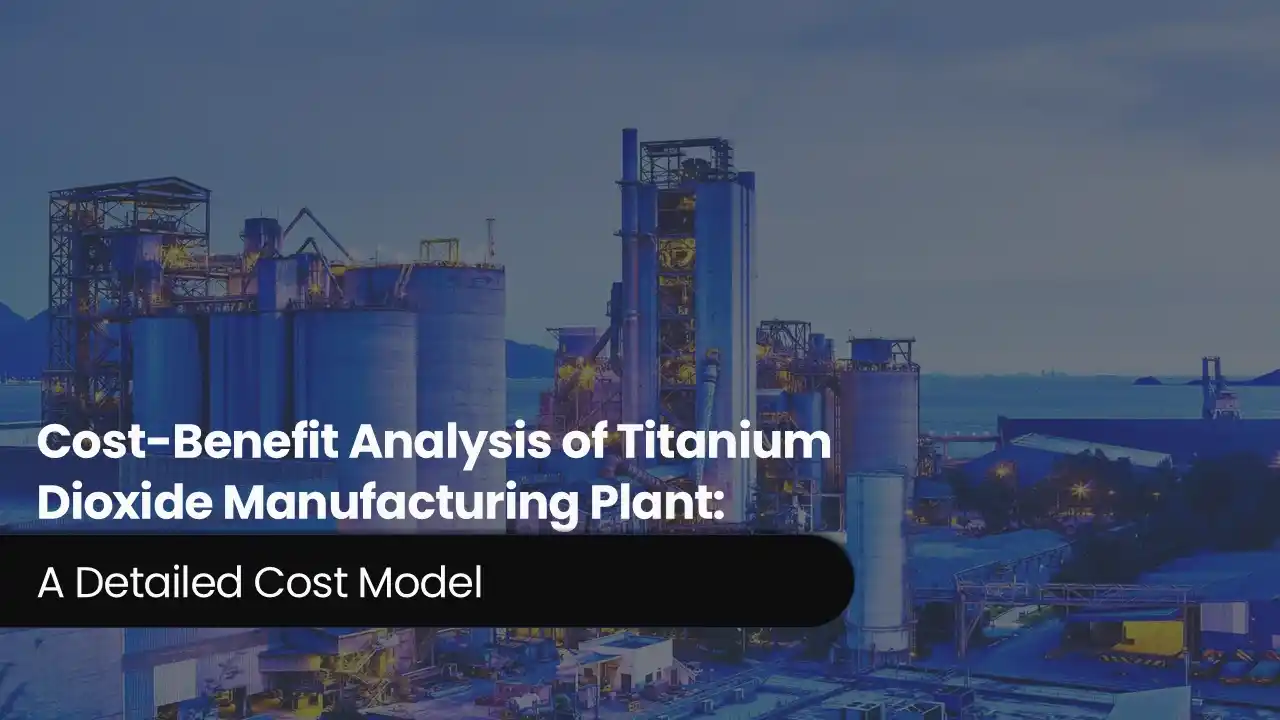
Titanium dioxide (TiO 2) is a white, naturally being mineral extensively used as a pigment, UV blocker, and opacifier. A vital element of paints, coatings, plastics, cosmetics, and sunscreens, it's well- known for its exceptional opacity, high illumination, and superior light- scattering capabilities. Also, TiO 2 is essential for advanced operations like photocatalysis, food, and pharmaceuticals. Because of its non-toxic and chemical- resistant rates, it's a necessary element of numerous different sectors, performing in steady demand worldwide. According to an IMARC study, the global titanium dioxide market was valued at US$ 21.2 Billion in 2024. Looking ahead, the market is expected to grow at a CAGR of approximately 5.5% from 2025 to 2033, reaching a projected value of US$ 34.4 Billion by 2033. Strong demand from a variety of industries propels the worldwide titanium dioxide (TiO 2) demand. Since TiO 2 is extensively utilised in architectural and automotive coatings due to its high opacity, illumination, and UV resistance, the coatings and paints industry is a major driver. Utilising TiO 2 for colour thickness, endurance, and UV protection in consumer goods and packaging, the plastics industry also increases demand. Also, its use in sunscreens and skincare products assists the cosmetics and particular care industry. The demand expansion is further supported by the growing use of TiO 2 for decolorizing and opacity in the food and medicinal industries. New opportunities are being created by technological developments in photocatalysis, especially in environmental applications like water and air purification. The market for TiO2-based goods is also being fuelled by growing infrastructure development and urbanisation in emerging economies. However, market dynamics may be impacted by environmental laws pertaining to the manufacture of TiO2.
Trending Insights on Titanium Dioxide: Latest News and Developments
- In December 2024, according to the Committee on Mutagenicity of Chemicals in Food, Consumer Products, and the Environment (COM) of the United Kingdom, there is "little evidence" that titanium dioxide (TiO2) in nanoform poses health risks. This comes after articles on the application of TiO2 as a food additive were screened and evaluated (E171).
- In December 2024, The World Health Organization's (WHO) Expert Committee on Food Additives (JECFA), which is part of the Food and Agriculture Organisation of the United Nations (FAO), has confirmed that titanium dioxide (TiO2), also known as E171, is not a food additive that poses any safety risks. This is in line with the most recent comprehensive safety assessment study on food additives.
- In March 2024, a group of researchers from the Università Politecnica delle Marche in Italy and TU Wien creates unique titanium oxide nanoparticles. For self-cleaning properties, it can be used with regular, store-bought wall paint.
- In December 2022, the Ti-Pure™ Sustainability (TS) series, including two high-performance grades, is the new Ti-Pure titanium dioxide (TiO2) product range that Chemours has announced. Chemours' dedication to furthering the sustainability objectives of the company, business units, and clients is demonstrated by this new product line.
- In November 2021, Meghmani Organics Limited (MOL) is investing Rs. 400 crores to establish a new and profitable White Pigment Titanium Dioxide (TiO2) plant in Dahej, with a 33,000 metric tonne production capacity. In many different industries, such as paint, coating, plastic, ink, dyes, paper, and cosmetics, titanium dioxide (TiO2) is utilised as a bright white pigment.
Case Study on Cost Model of Titanium Dioxide Manufacturing Plant
Objective: One of our clients has approached us to conduct a feasibility study for establishing a mid to large-scale titanium dioxide manufacturing plant in Cairo, Egypt. We have developed a detailed financial model for the plant's setup and operations. The proposed facility is designed with a production capacity of 152 tons of titanium dioxide per day and will cover a land area of 113,705 square meters.
Manufacturing Process: The first step in producing titanium dioxide (TiO 2) is beneficiation, also known aspre-treatment, in which ores rich in titanium, like rutile or ilmenite, are crushed, ground, and contaminations are removed to increase the concentration of titanium. The coming step is acid digestion, which involves reacting sulphuric acid (sulphate process) or chlorine (chloride process) with thepre-treated ore to remove titanium composites. The solution is washed to get relieve of undesirable derivations after digestion. In the hydrolysis process, titanium composites are precipitated to induce hydrated titanium dioxide. To get relieve of pollutants and add constituents that improve the finished product's qualities, another washing and doping procedure is used. The substance is also heated to high temperatures during the calcination process, which turns it into crystals of pure titanium dioxide. After that, the crystalline TiO2 is ground to the appropriate surface characteristics and particle size. The refined TiO2 is then packaged and marketed for usage in cosmetics, coatings, and polymers, among other products.
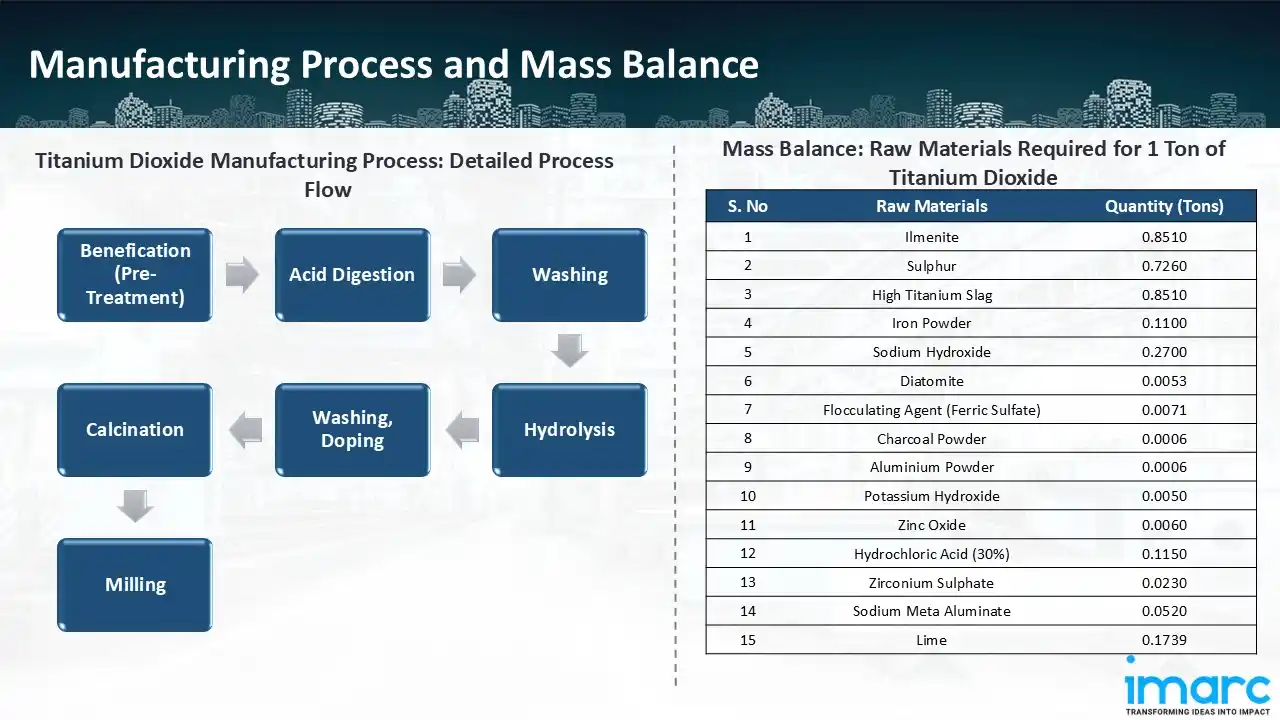
Mass Balance and Raw Material Required: The primary raw materials utilized in the Titanium Dioxide manufacturing plant include ilmenite, sulphur, iron powder, sodium hydroxide, high titanium slag, flocculating agent, charcoal powder, diatomite aluminium powder, potassium hydroxide, zinc oxide, hydrochloric acid, zirconium sulphate, sodium meta-aluminate, and lime. To manufacture 1 tons of titanium dioxide, ilmenite (0.851 tons), sulphur (0.726 tons), high titanium slag (0.851 tons), iron powder (0.1100 tons), sodium hydroxide (0.2700 tons), diatomite (0.0053 tons), flocculating agent (0.0071 tons), charcoal powder (0.0006 tons), aluminium powder (0.0006 tons), potassium hydroxide (0.0050 tons), zinc oxide (0.0060 tons), hydrochloric acid (0.1150 tons), zirconium sulphate (0.0230 tons), sodium meta aluminate (0.0520 tons), and lime (0.1739 tons) is required.
Techno-Commercial Parameter:
- Capital Investment (CapEx): The total capital cost for establishing the proposed titanium dioxide manufacturing plant is approximately US$ 182.34 Million. The plant and machinery costs account for 62.0% of the total capital cost, while civil works costs are estimated at US$ 51.20 Million. The land and site development cost for a titanium dioxide manufacturing plant constitutes a significant portion of the total capital cost, including the land registration charges, developmental charges of building walls, steel gates, and other development charges. This ensures a strong foundation for safe and efficient plant operations.
- Operating Expenditure (OpEx): In a titanium dioxide manufacturing plant, the operating cost for the first year of operations is projected at US$ 127.94 Million. This estimate includes the cost of raw materials, utilities, depreciation, taxes, packing cost, transportation cost, and repairs and maintenance. By the tenth year of operations, the total operational cost is expected to increase by 25.3% compared to the first year, driven by inflation, market fluctuations, and potential rises in the cost of key materials. Disruptions to the supply chain, rising consumer demand, and shifts in the state of the world economy are some of the factors causing this growth.
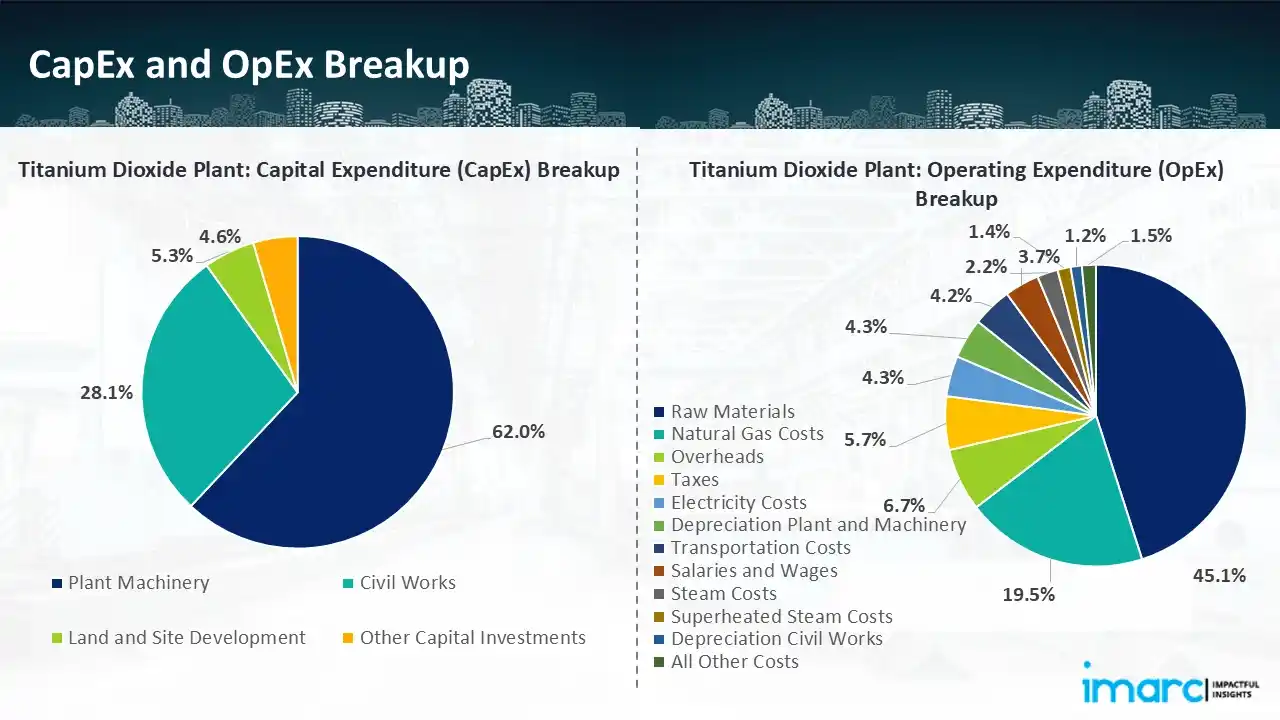
- Profitability Analysis Year on Year Basis: The proposed titanium dioxide plant, with a capacity of 152 tons of titanium dioxide per day, achieved an impressive revenue of US$ 171.17 Million in its first year. We assisted our client in developing a detailed cost model, which projects steady growth, with revenue reaching US$ 216.81 Million by year 10. Gross profit margins improve from 25.3% to 26.0%, and net profit margins rise from 13.3% to 18.0%, highlighting strong financial viability and operational efficiency.
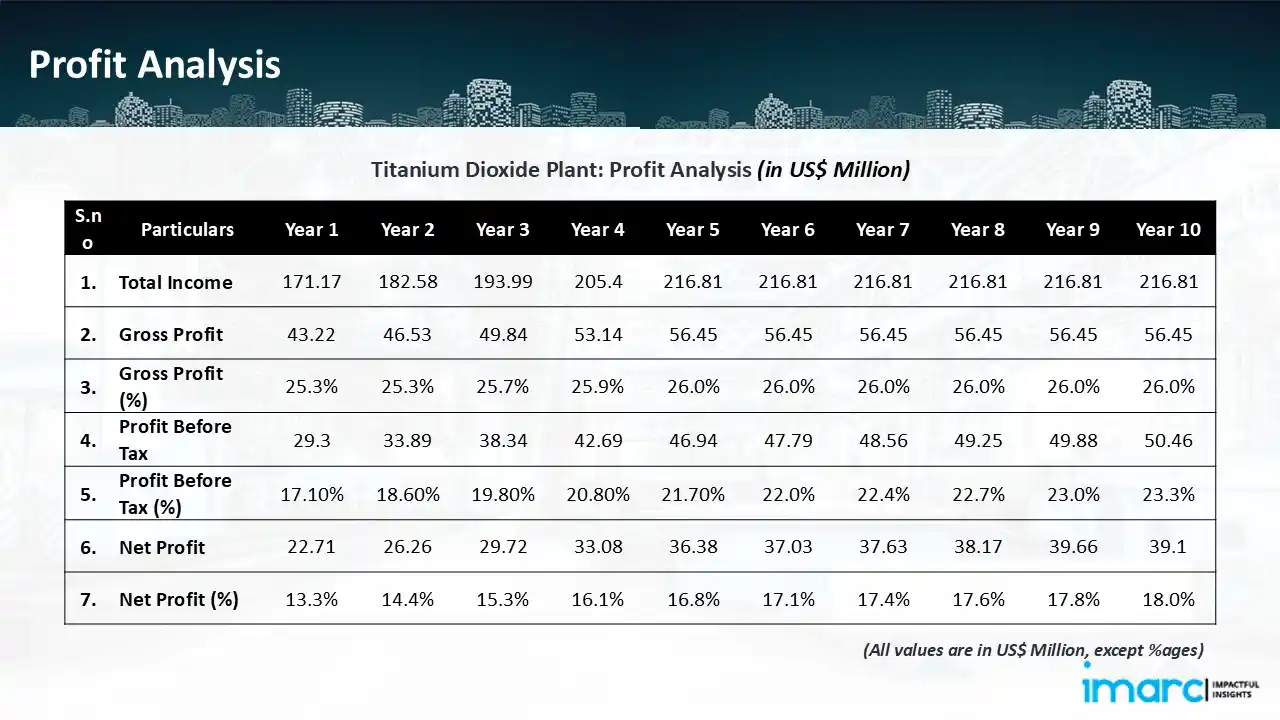
Conclusion
Our titanium dioxide manufacturing plant's financial model was meticulously modelled to satisfy the client's requirements. It provided a thorough analysis of production costs including capital expenditures, manufacturing processes, raw materials, and operating costs. The model predicts profitability while accounting for market trends, inflation, and any shifts in the price of raw materials. It was created especially to satisfy the demand of producing 152 tons of titanium dioxide per day. Our commitment to offering precise, client-cantered solutions that ensure the long-term success of significant industrial projects by giving the client useful data for strategic decision-making is demonstrated by this comprehensive financial model.
IMARC's Financial Model Expertise: Helping Our Clients Explore Industry Economics
IMARC is a global market research company that offers a wide range of services, including market entry and expansion, market entry and opportunity assessment, competitive intelligence and benchmarking, procurement research, pricing and cost research, regulatory approvals and licensing, factory setup, factory auditing, company incorporation, incubation services, recruitment services, and marketing and sales.
Brief List of Our Services: Market Entry and Expansion
- Market Entry and Opportunity Assessment
- Competitive Intelligence and Benchmarking
- Procurement Research
- Pricing and Cost Research
- Sourcing
- Distribution Partner Identification
- Contract Manufacturer Identification
- Regulatory Approvals, and Licensing
- Factory Setup
- Factory Auditing
- Company Incorporation
- Incubation Services
- Recruitment Services
- Marketing and Sales
Under our factory setup services, we assist our clients in exploring the feasibility of their plants by providing comprehensive financial modeling. Additionally, we offer end-to-end consultation for setting up a plant in India or abroad. Our financial modeling includes an analysis of capital expenditure (CapEx) required to establish the manufacturing facility, covering costs such as land acquisition, building infrastructure, purchasing high-tech production equipment, and installation. Furthermore, the layout and design of the factory significantly influence operational efficiency, energy consumption, and labor productivity, all of which impact long-term operational expenditure (OpEx). So, every parameter is covered in the analysis.
At IMARC, we leverage our comprehensive market research expertise to support companies in every aspect of their business journey, from market entry and expansion to operational efficiency and innovation. By integrating our factory setup services with our deep knowledge of industry dynamics, we empower our clients to not only establish manufacturing facilities but also strategically position themselves in highly competitive markets. Our financial modeling and end-to-end consultation services ensure that clients can explore the feasibility of their plant setups while also gaining insights into competitors' strategies, technological advancements, and regulatory landscapes. This holistic approach enables our clients to make informed decisions, optimize their operations, and align with sustainable practices, ultimately driving long-term success and growth.
Contact Us
Have a question or need assistance? Please complete the form with your inquiry or reach out by emailing us on sales@imarcgroup.com.
